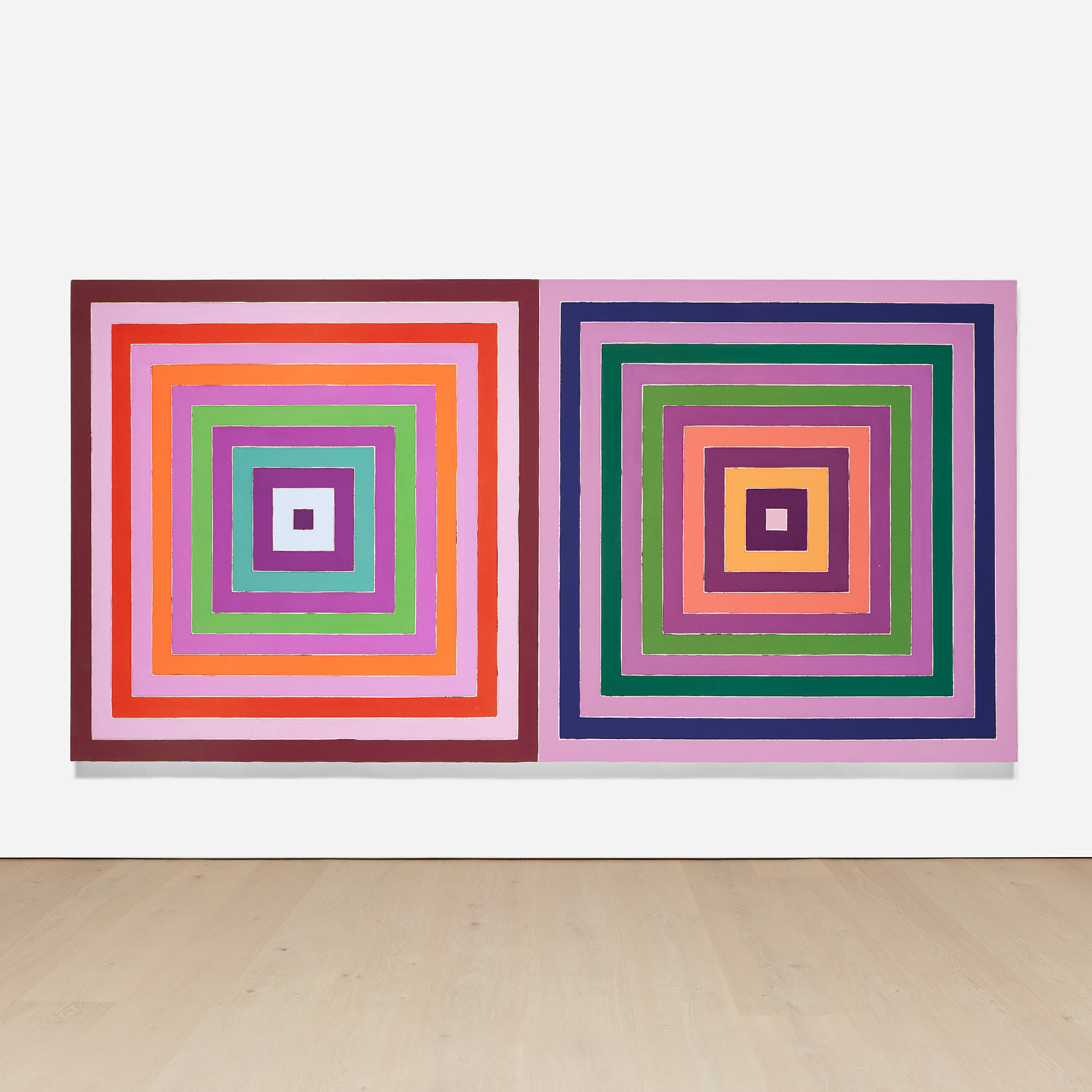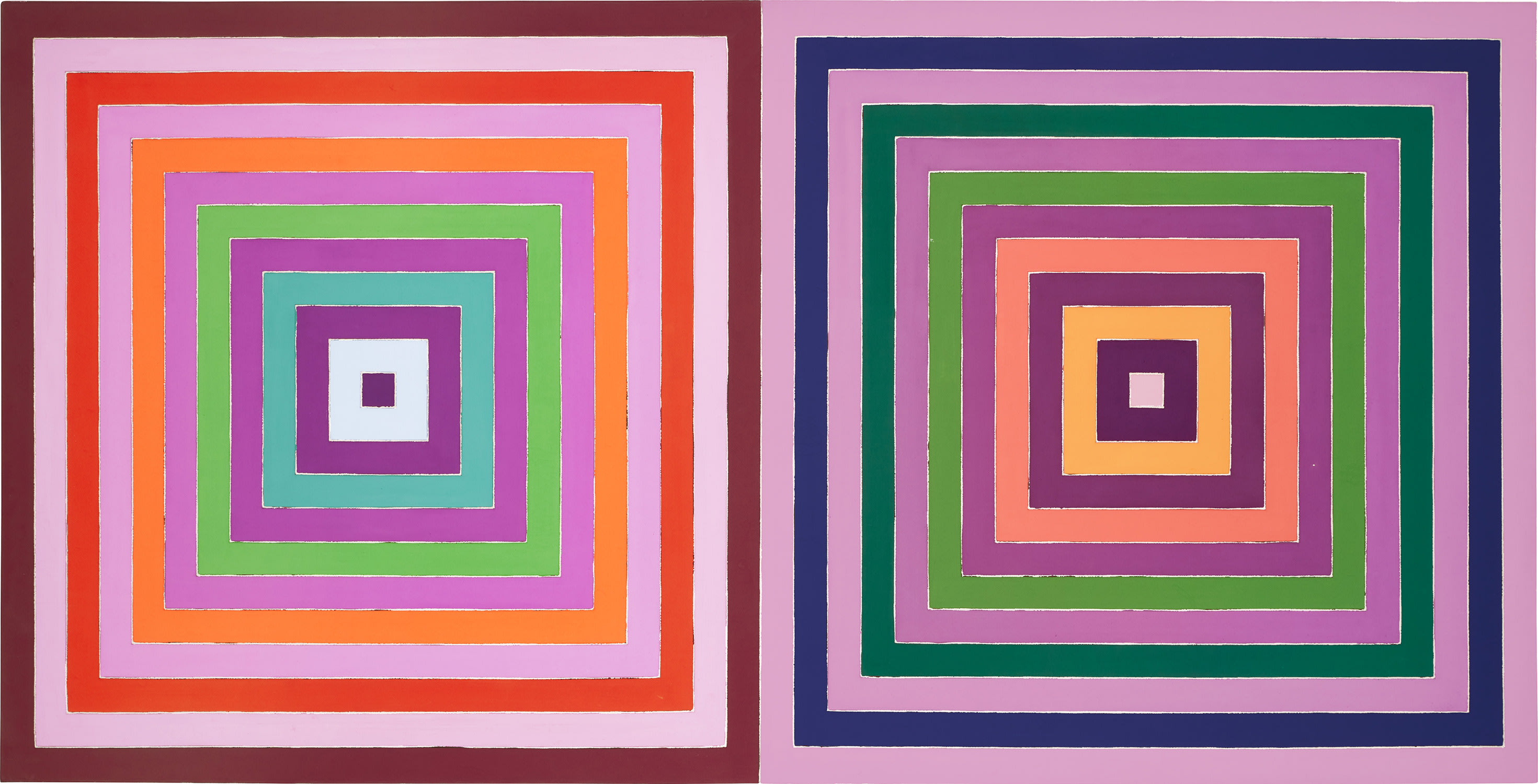



Property of an American Collector
31Ο◆
Frank Stella
Double Concentric Square
signed and dated "F. Stella 78" on the overlap
acrylic on canvas
81 x 161 in. (205.7 x 408.9 cm)
Painted in 1978.
Further Details
Full-Cataloguing
Frank Stella
American | B. 1936 D. 2024Frank Stella is recognized as the most significant painter that transitioned from Abstract Expressionism to Minimalism. He believed that the painting should be the central object of interest rather than represenative of some subject outside of the work. Stella experimented with relief and created sculptural pieces with prominent properties of collage included. Rejecting the normalities of Minimalism, the artist transformed his style in a way that inspired those who had lost hope for the practice.